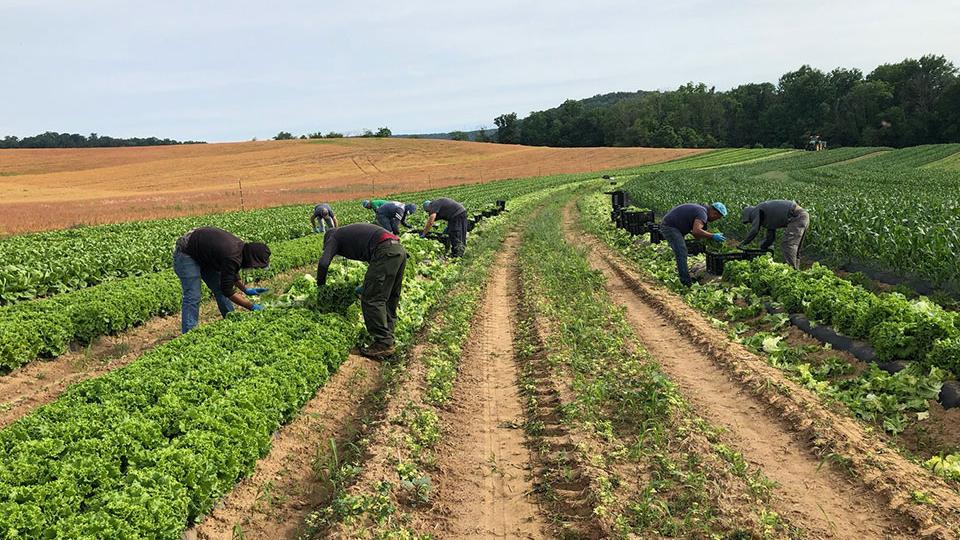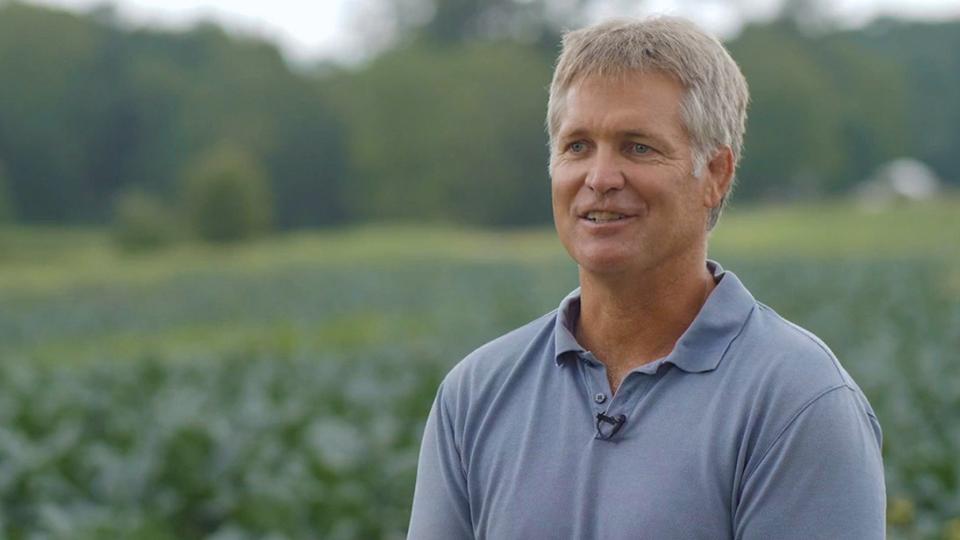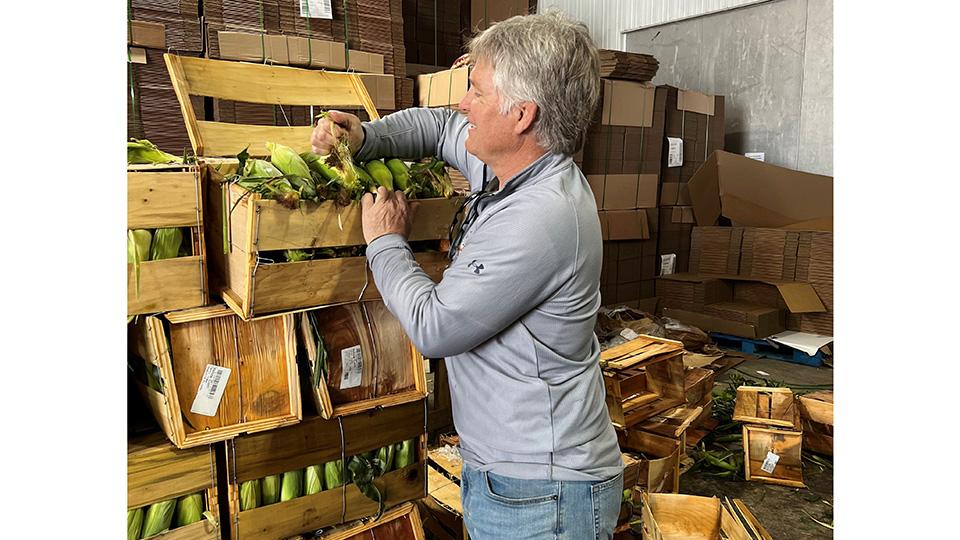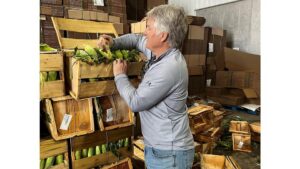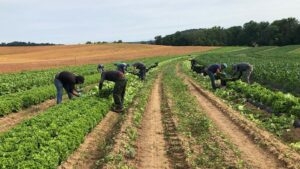5 Ways That It’s Still Possible to Build a Large Farm Today
How do you go about building a farm tenfold? Brian Campbell, owner of of Brian Campbell Farms, knows. Reflecting on his farm’s growth from 200 acres to almost 2,000 acres, Campbell says, “I had a lot of opportunities.”
He spells out five ways he was able to develop those opportunities.
Build on Family and Community Relationships
The first opportunity Campbell received came from his dad.
His father, a physician, moved their family to a 150-acre cattle farm in central Columbia County, PA, when Campbell was six years old. His father took time out of his busy schedule to do some farming. As he entered his teens, he took up growing himself.
“My father would take me to the farmers’ market on the way to the hospital and pick me up on his way home,” he says.
Through his father’s community ties, Campbell met local farmers, who were often his father’s patients. They gave him jobs picking produce or, when his dad wasn’t available, took him to local farmers’ markets to sell his own produce, giving him his first taste of what it’s like to farm.
By the time he was 14, Campbell was selling produce from an empty lot owned by his father’s friends, calling his venture “Farmer Moofy’s Produce Stand.”
Campbell began to understand that long-term relationships are important, both personally and professionally. His high school teachers and principals knew he was running his own business and became regular customers. Which was helpful when he “called the school to tell them (he) was planting tomatoes and wouldn’t be coming to school that day.”
Integrity Pays
From the beginning, Campbell kept thorough records of his sales and expenses at his parents’ urging. That included paying taxes on everything he earned.
And it served him well. Earning money under the table offers short-term gains. But in the long run, it can undermine your growth.
When Cambell was still in college, a neighbor approached him about buying her 250 acres. His detailed records, which reflected his full farming income, helped convince a local banker to loan him the needed money.
“A lot of people think my father has financed my farm,” Campbell says. “But actually, he only cosigned on that first loan.”
Later, when whole-farm-revenue protection insurance became available, Campbell was able to provide much-needed stability for his operation after some devastating floods, due to his well-kept records.
He learned another early lesson, this time about quality. From his first time picking strawberries to his first crop of pumpkins sold to Walmart, Campbell realized that good quality produce sells better, creating trust (and future sales) with customers.
Walk Before You Run, But Don’t Wait Too Long
After graduating with an agriculture degree from Penn State in 1990, Campbell had an opportunity to farm his father’s 200 acres along with the 250 acres he had bought during college. That same season, he rented more land from a neighboring farm, giving rise to his father’s admonition to “learn to walk before you run.”
As Campbell puts it, “I think big.”
His original plan was to grow grains and processing tomatoes, as well as crops for his produce stand. Meanwhile, he developed a relationship with a farmer who sold pumpkins to Walmart. This farmer asked Campbell to raise pumpkins for him.
By the end of his first pumpkin season, Campbell saw an opportunity to make more money by selling pumpkins directly to Walmart.
Continue to Learn and Improve
When Campbell talks about his farm’s growth, he constantly uses the phrase, “and so I learned how to do that.”
His ability to evaluate and improve all areas of his farming has led to growth in acres and profits. His first contract with Walmart became the basis for much of the farm’s growth, going from seven loads of pumpkins the first year to 40 loads the next year.
Growing that volume of pumpkins led him to establish an H-2A program. But growing pumpkins only required workers for about six weeks in the fall.
As he evaluated his labor needs, he realized he could maintain a more consistent workforce if he had more produce for them to harvest.
“I was already raising sweet corn for the produce stand, so I thought, ‘I’m going to figure out how I can grow the sweet corn for Walmart,’” Campbell says. Once Walmart and Giant, a local supermarket chain, agreed to take his sweet corn, he increased his sweet corn sales from two trailer loads the first year to currently 100 loads per year. Sustaining that growth meant he had to learn about postharvest best practices, mainly hydrocooling.
A few years later, he realized that Walmart wanted to increase its sales of locally grown produce, so he established broccoli as another commodity crop that he could supply to them. Adding broccoli to corn and pumpkins also meant he could employ H-2A workers for a longer, seven-month, period.
Provide Opportunities for Others
As a result of his stable workforce, existing logistical capability, and professional relationships, Campbell was awarded contracts with the 2020 USDA Farmers to Families Food Box Program.
“I used some of my Walmart buyers to verify that I could do (the box program) on such a large scale,” he says.
His work with food banks throughout Pennsylvania helped him “learn a lot more about what being food insecure is all about.” It had him reflect on the opportunities he had and how he wants his farm to grow in the future.
“I am thinking about making bigger things at this point. What I am hoping to set up with the help of others on a larger scale is to make a difference in some people’s lives who maybe haven’t had an opportunity to learn to walk so that they can run,” he says.
Campbell’s mix of integrity, diligence, and respecting those around him meant he didn’t just grow pumpkins, sweet corn and broccoli.
He grew relationships and opportunities that grew a farm.
At a Glance: Brian Campbell Farms
Owners: Brian and Erika Campbell
Founded: 1990
Location: Berwick, PA
Size: 1,800 acres
Customers: Wholesale chain stores, retail farm markets, Pennsylvania food banks
Crops: Broccoli, sweet corn, cauliflower, grain, various fresh market fruit and vegetables for farm market





